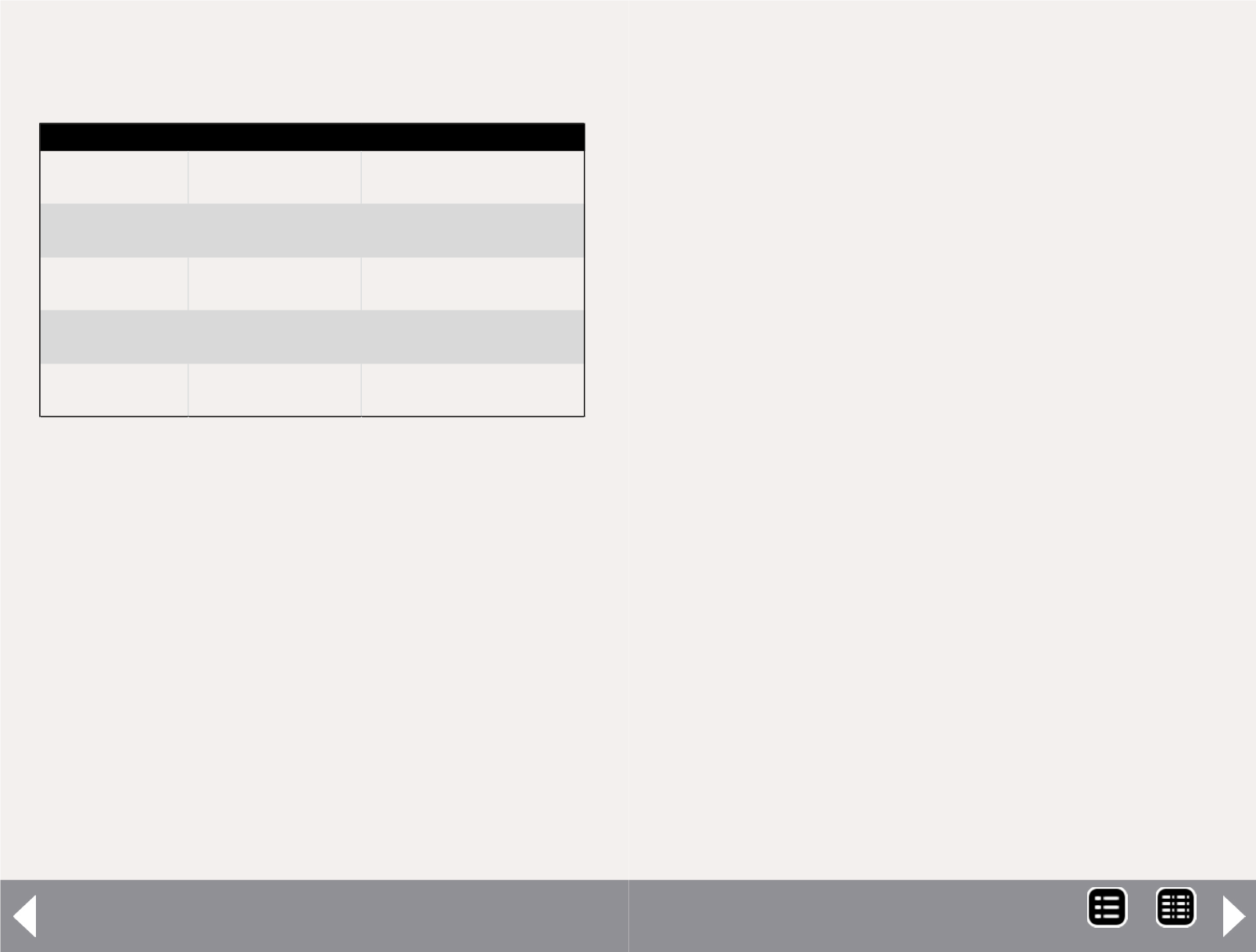
running (that is, switching) it has. Compute the max-to-main value
as:
max nbr of cars / mainline track cars
to get a percentage, with
the results meaning:
Percentage
Summary
Comments
Under 50% Mainline focus Focus is mainline running;
little switching
50 - 80% Mainline emphasis High amount of mainline
running vs. switching
81 - 120%
Balanced
Mainline running and
switching balanced
121 - 150% Switching emphasis High amount of switching
vs. mainline running
Over 150% Switching focus Focus is switching; little if
any mainline running
NUMBER OF CARS MOVED:
The number of cars moved in a typi-
cal operating cycle can be computed as: 4
0% of (staging x 2 +
passing + connecting)
. To increase the number of cars moved,
we need to increase some combination of staging, passing, or
connecting trackage.
Notice staging is particularly effective in increasing the number of
cars moved, since for every train that leaves staging, another can
move in to replace it, meaning twice the cars can be moved (if they
are available elsewhere on the layout). In effect, staging acts as
both connecting track and passing track – thus serving double duty.
Another thing we can do to increase cars moved is stop using some
track for storage, and designate it instead to be either staging, pass-
ing (if trains can legitimately “pass” on this trackage), or leaving it
undesignated and always free of stored cars, so by default it be-
comes connecting track.
Layout design assessment - 8
TRAINS:
We can divide the number of cars moved by our average
train length to arrive at the average number of trains we can expect
in a typical operating cycle.
Average train length is the smaller of
average passing train length or average staging train length
.
One operating cycle is defined as running the layout in a realistic
manner until the trains you run begin to repeat. Ordinarily this will
be one “24 hour” day according to the modeled train schedule. De-
pending on our fast clock ratio, the experience of our crew, the reli-
ability of our equipment, the length of a typical run, and the level
of detail to which we simulate prototype operating practices, the
actual time it takes to complete one cycle could vary from one hour
to dozens of hours. Three to four hours is probably a good typical
cycle, however.
DISPATCHING THRESHOLD:
Compute as:
(3 x shortest passing sid-
ing + 2 x average passing siding + longest passing siding) / 6
. Two
opposing trains of this size or larger will tend to create a dispatch-
ing bottleneck because they cannot easily pass each other except
at select sidings. If you want to ease the dispatcher’s workload,
keep the typical train length at or under this size.
If you want the dispatcher to more easily manage longer trains,
then lengthen your passing sidings. The best way to increase this
threshold is to lengthen your shortest passing sidings first. Of
course, you need to keep the length of your staging tracks in sync
with passing siding lengths as explained above under the train
length stats.
Another less obvious tactic to improve this stat (if your passing
sidings are smaller than your staging tracks) is to declare very
short passing sidings to be switching runaround tracks only
(and thus connecting track instead of passing track), thereby
removing them from routine consideration as locations where
MRH-Oct 2014


